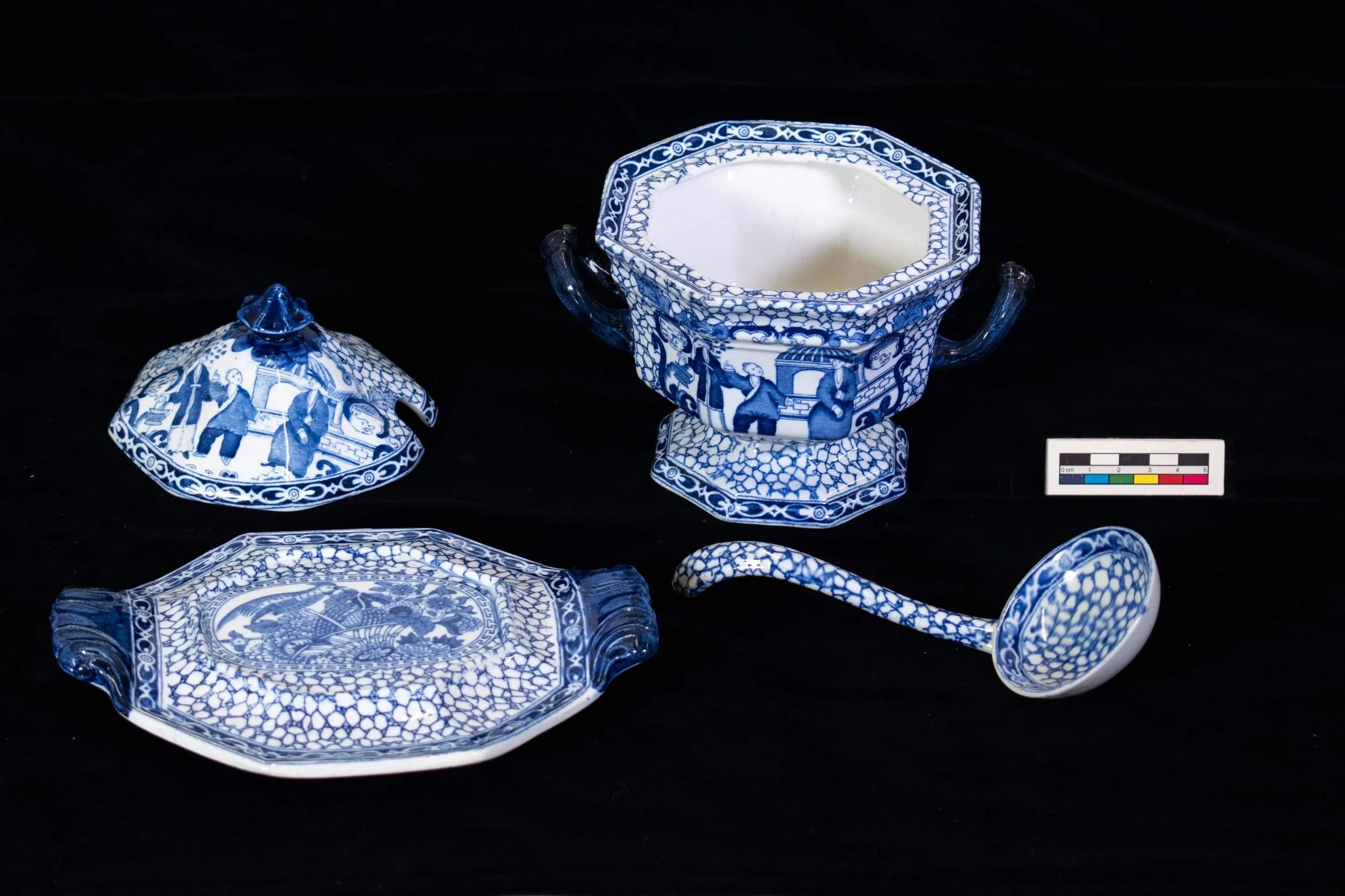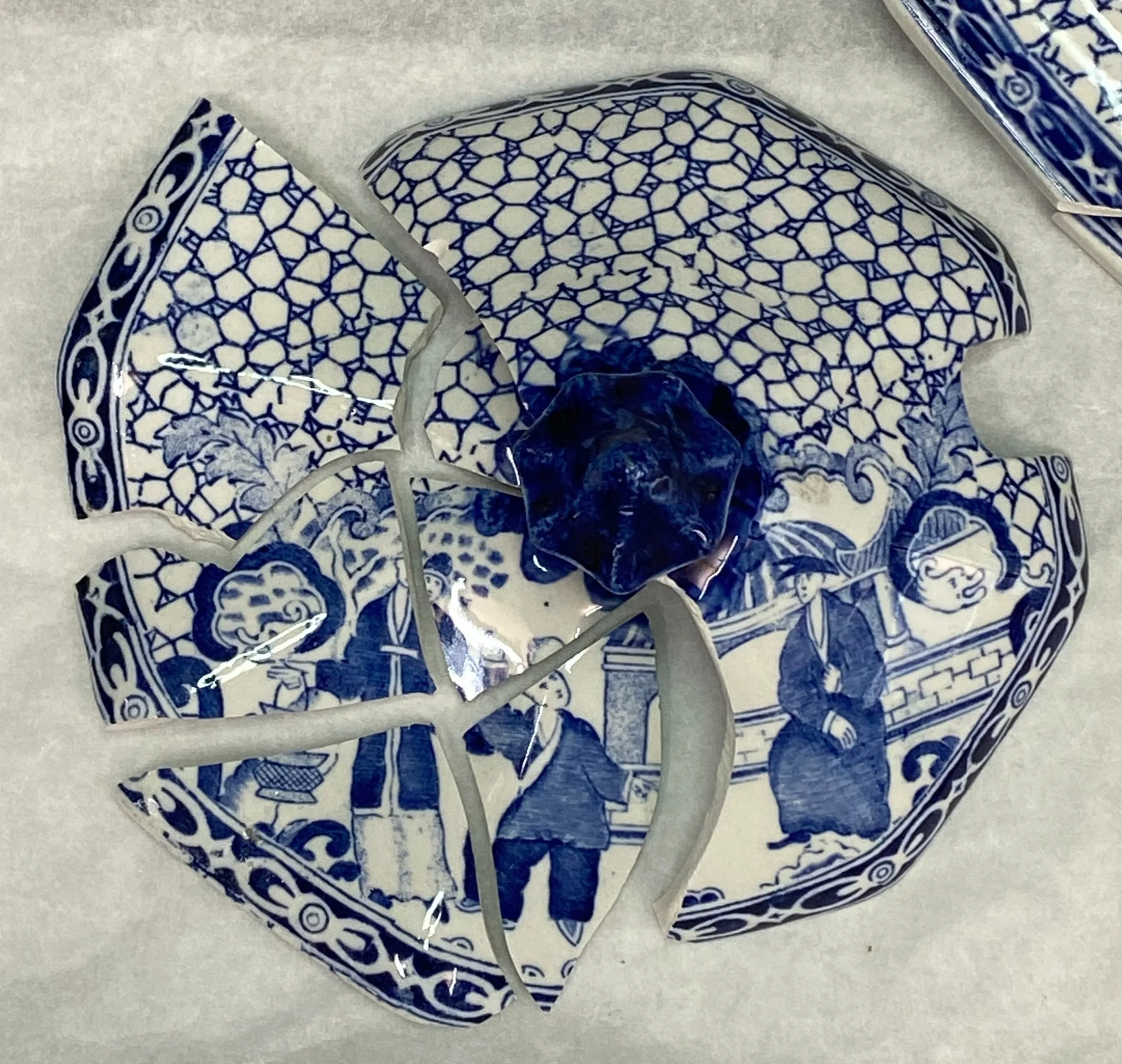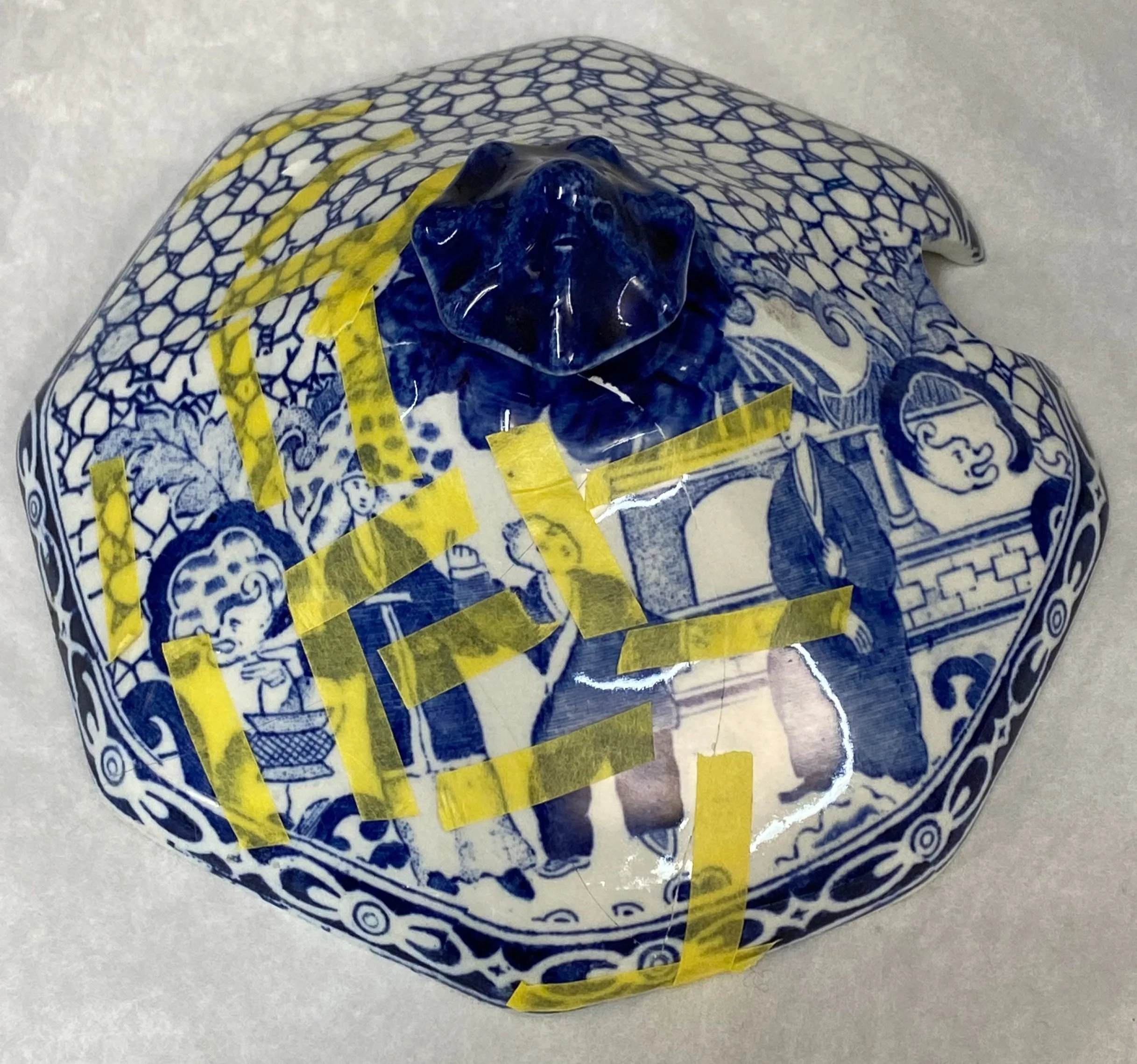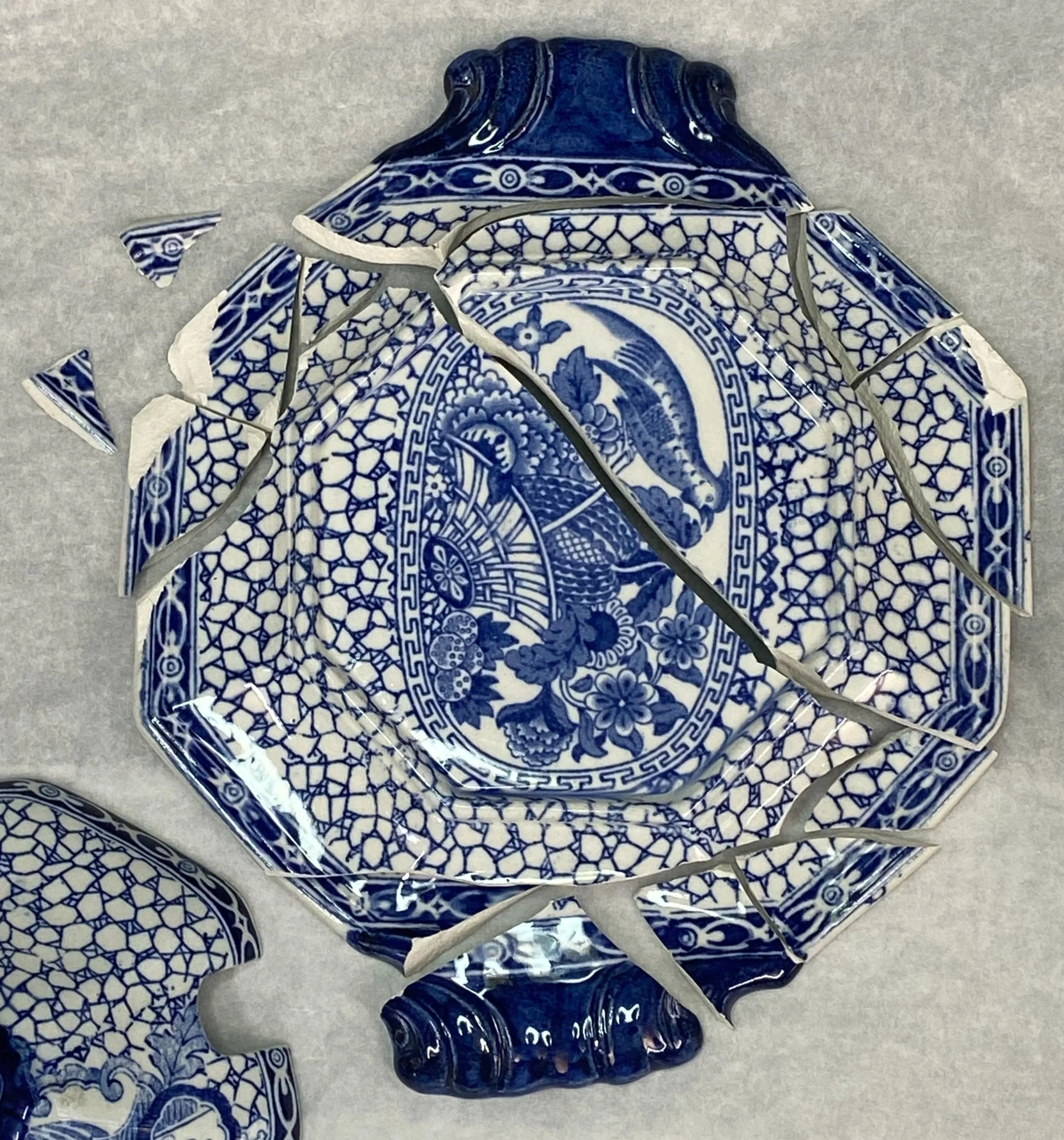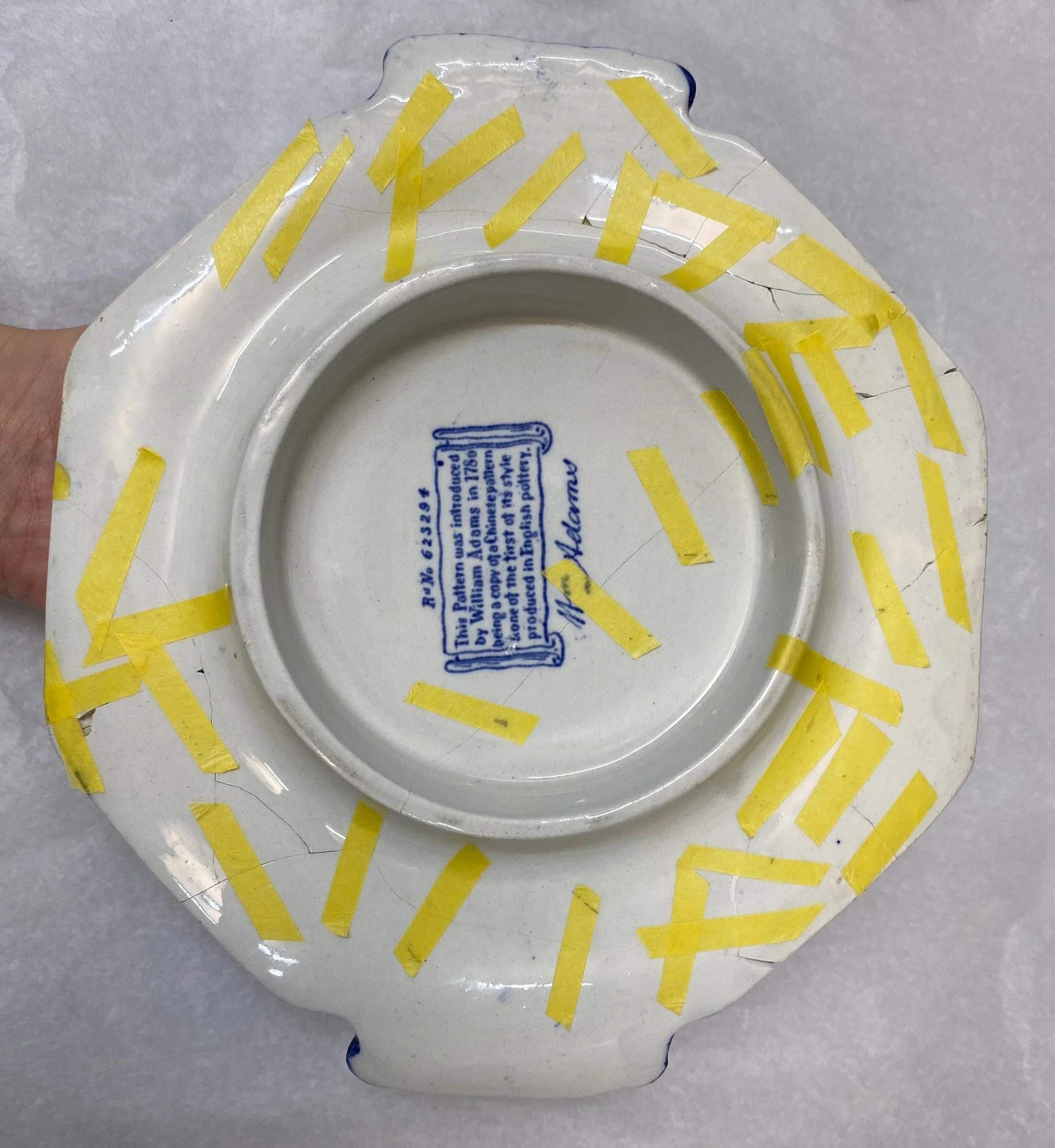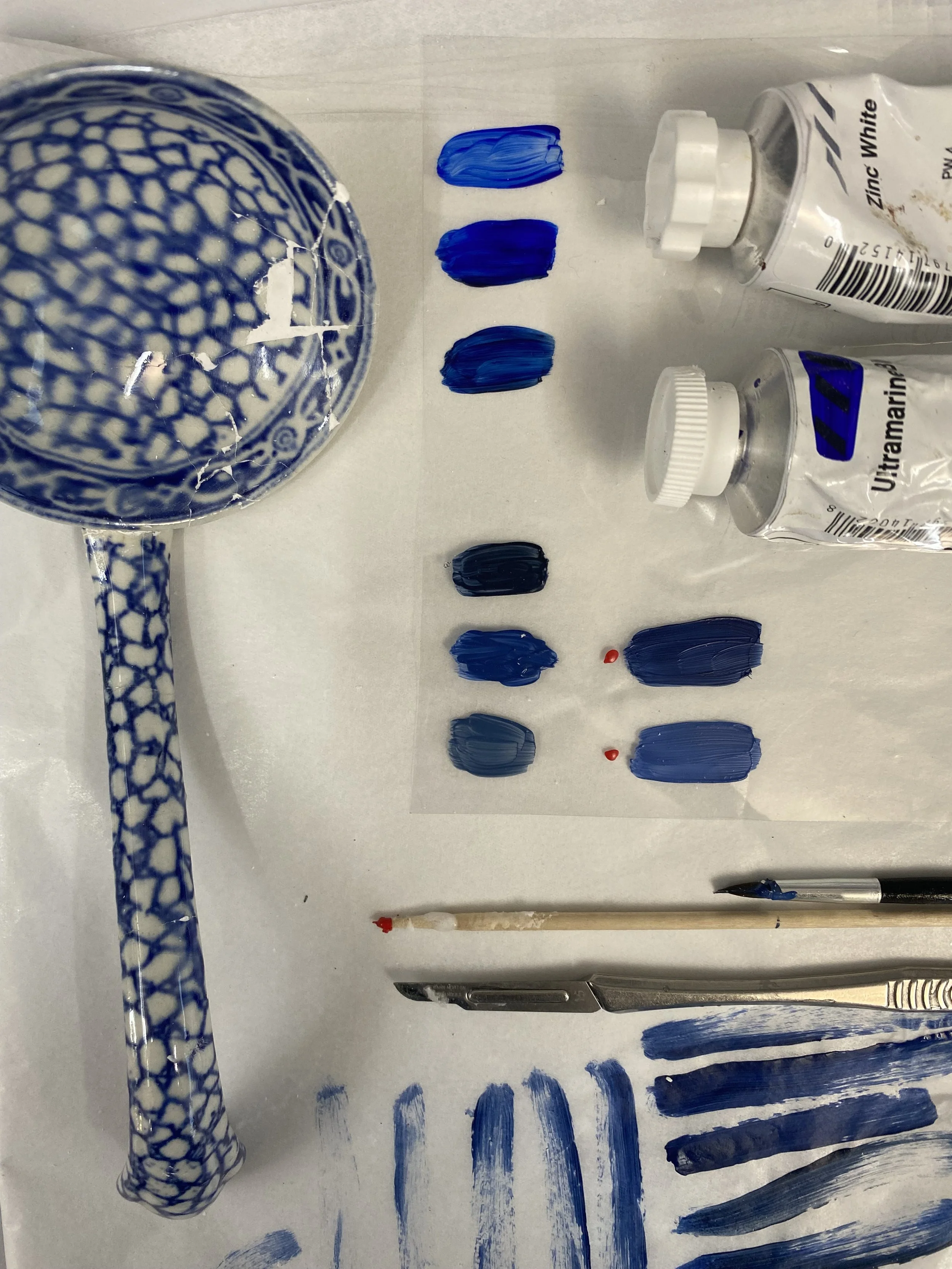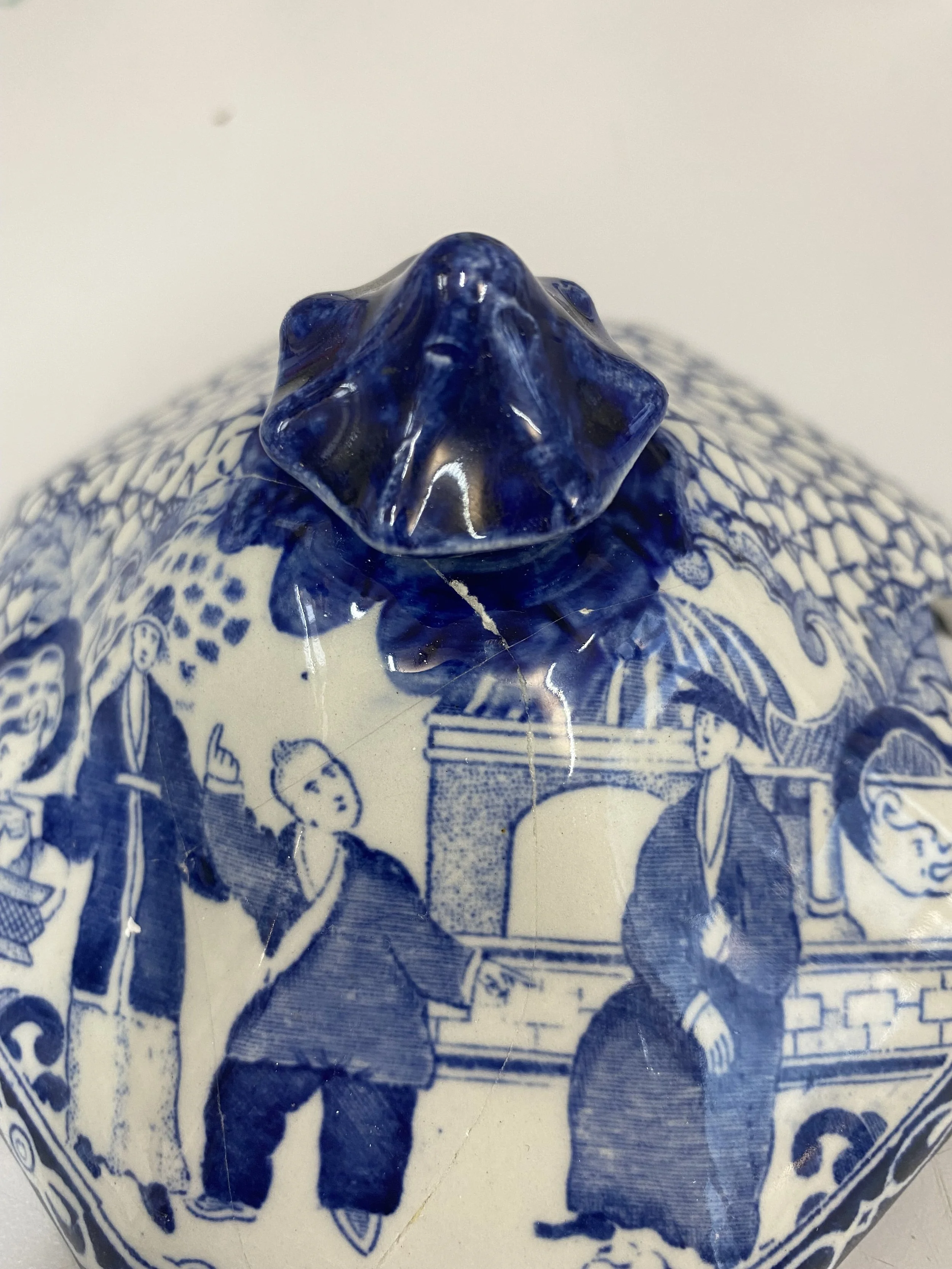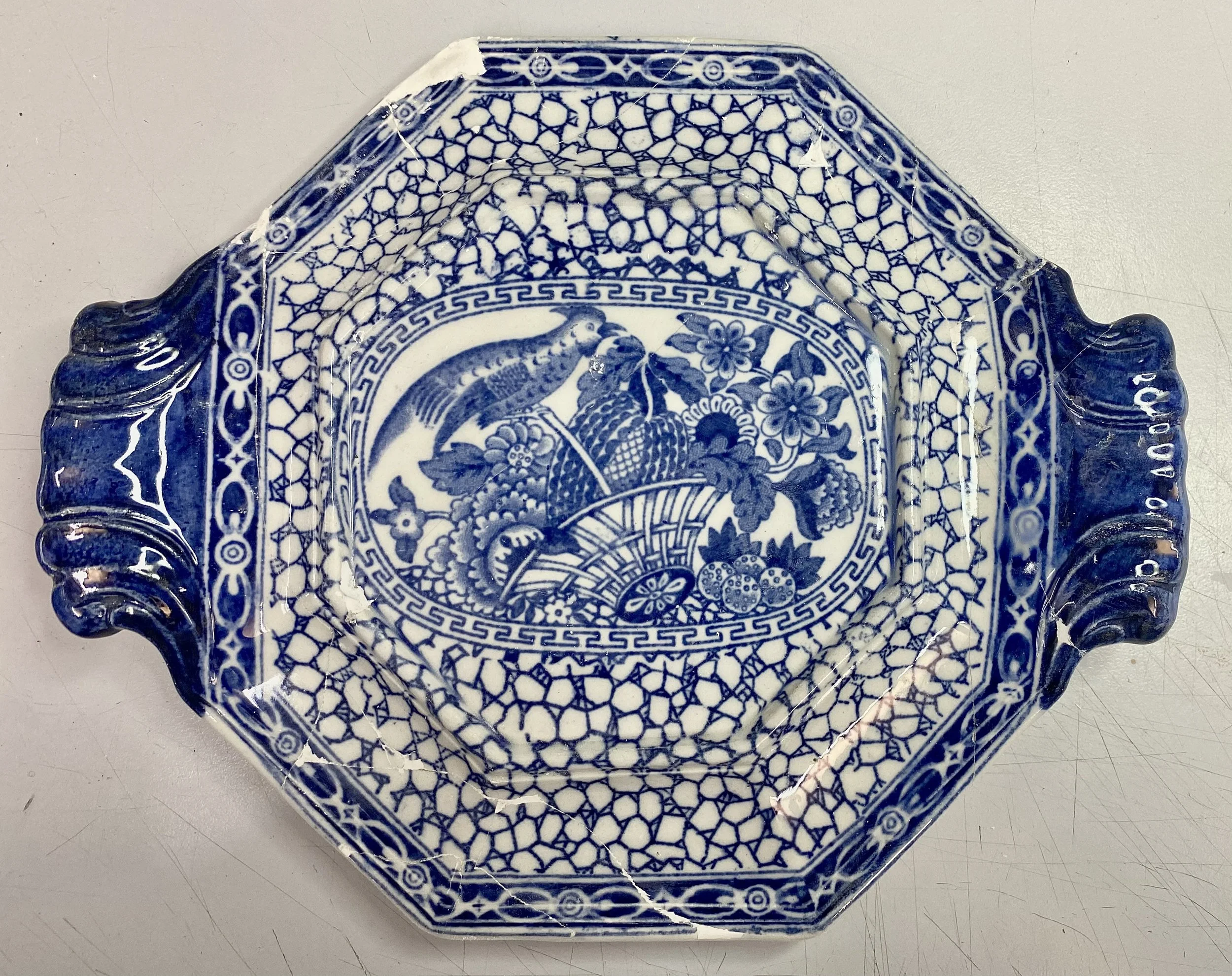William Adams Soup Tureen
(No. 9965)
Project Hours: 27 total
Date: early 20th c.
Dimensions: L: 220mm W: 160mm D:205mm
Materials: Ceramic
Object Description:
The object is a product of the William Adams Company, which had been established in 1779 by William Adams I and was inherited by his son Benjamin following his death. The company was sold outside of the family in 1826 but was then acquired by relatives of the Adam’s family in 1897. The company remained owned by the Adam’s family until 1966, when the Wedgewood Group took control. The object is currently owned by Richard Anderton.
Condition:
Overall, the fabric of the vessel is structurally sound, with light soiling and remnants of food residue on interior edges of bowl which negate its functional and sensory values. All components of the object are fragmented into a total of 60 pieces. The lid is broken into 7 pieces, the plate is in 15 pieces, the bowl is in 11 fragments, the spoon is in 17 fragments, as well as 10 miscellaneous fragments. These breakages obscure from the nearly all facets of the item’s sensory, functional, and partially associative significance.
The fragmentary state of the item can be positive for understanding the item’s evidentiary value, as it reveals cross sections of the ceramic. The presence of food residue on the interior of the bowl adds to the evidentiary value of the object containing information about its use, however it could cause staining and as an organic substance, it could potentially attract pests. Additionally, keeping the piece in a fragmented state could aid in the risk of misplacing or further damaging its many pieces which could further detract from its sensory value if more pieces are harmed or lost. More breakages could also occur to numerous small fragments, as they are fragile and thin.
Dry Surface Cleaning:
Surface dry cleaning removed any minimal food residue left in crevices using a soft bristle brushes and a netted vacuum.
All small fragments with any particles were individually cleaned using a smoke sponge (vulcanised rubber)
The use of 50/50 ethanol in deionized water successfully removed all food residues and soiling on the surfaces without having any physical impact such as staining on the object.
Reconstruction of Object
Using Paraloid B-72 (ethyl methacrylate copolymer) with a concentration of 50% w/v in acetone the bowl, plate, spoon, and lid were each reconstructed.
A dry build was conducted with the pieces to ensure the correct order of assembly to minimize adjustments.
Once finalised, each item was reassembled with Paraloid B-72 using a small paint brush and bamboo skewer.
Joins were reinforced with yellow delicate surface Frog Tape (rubber adhesive with paper backing) during the 24 hour curing process.
Due to its curved shape, the spoon specifically dried in a container of kinetic sand (silicone oil saturated sand) conforming to its original curvature.
Loss Compensation
Tests were done for loss compensations on surrogate material of similar design and style to the object.
All superficial losses were filled with Flugger (Butyl methacrylate and calcium carbonate) and sanded and polished with micro-mesh to match the contours of the losses.
Two deeper losses in the bowl were first filled with a mixture micro balloons and Paraloid B-72 40% w/v concentration in acetone.
The interior section of the loss was filled then left to cure for 24 hours. Once cured, a layer of Flugger was applied overtop to create a smooth surface that matched the ceramic.
To further achieve reinstating the original sensory value of the object, the loss compensation was in-painted to match the original pattern using Liquitex acrylic paints (ultramarine, raw sienna, burnt umber, titanium white, ivory black, and chromium oxide) and Liquitex acrylic gloss varnish (propylene glycol).

